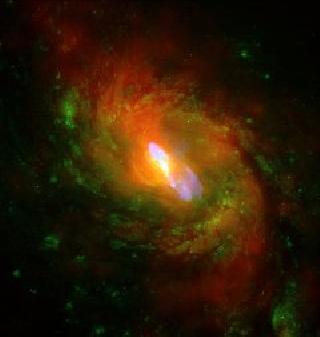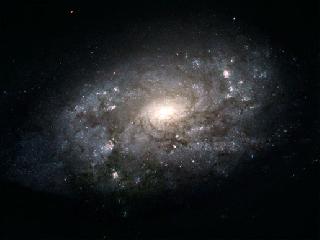
WASHINGTON (PTI): A black hole, three-million times the size of the Sun, in the centre of our galaxy is all set to devour an approaching cloud of dust and gas known as G2.
A supercomputer simulation prepared by researchers suggests some of G2 will survive, although its surviving mass will be torn apart, leave it with a different shape and questionable fate.
The findings were led by physicist Peter Anninos and astrophysicist Stephen Murray, both of AX division within the Weapons and Complex Integration Directorate (WCI).
Researchers came up with six simulations, using the Cosmos++ computer code.
Previous simulations of the upcoming event had been done in two-dimensions, but the Cosmos++ code includes 3D capability, as well as a unique "moving mesh" enhancement, allowing the simulation to more-efficiently follow the cloud's progression toward the black hole.
The black hole is known as Sgr A. "Sgr" is the abbreviation for Sagittarius, the constellation near the center of the Milky Way.
"While this one is 3-to-4 million times as big as our sun, it has been relatively quiet," Murray said in a statement.
"It's not getting fed very much," Murray said.
Contrary to their name, black holes can appear very bright. That's because gas orbiting them loses energy via friction, getting hotter and brighter as it spirals inward before falling into the black hole.
The dust in the cloud has been measured at about 277 degrees Celsius, approximately twice as hot as the surface temperature on Earth. The gas, mostly hydrogen, is about 9726 degrees Celsius, or almost twice as hot as the surface of the sun.
As the cloud approaches the black hole and begins to fall into what Murray describes as "a gravity well" beginning next September, it will begin to shed energy, causing it to heat to incredibly high temperatures, visible to radio and X-ray telescopes on Earth.
But it won't be a collision course.
The point at which stellar objects can no longer escape being swallowed by a black hole is known as the Schwarzschild radius.
The cloud will actually pass far enough away that it will escape the point of no return by approximately 2,200 Schwarzschild radii, which in this case is about 200 times as far as Earth is from the Sun.
However, the supercomputer simulations show that the cloud will not survive the encounter.
 Previous Article
Previous Article Next Article
Next Article













The Indian Air Force, in its flight trials evaluation report submitted before the Defence Ministry l..
view articleAn insight into the Medium Multi-Role Combat Aircraft competition...
view articleSky enthusiasts can now spot the International Space Station (ISS) commanded by Indian-American astr..
view article